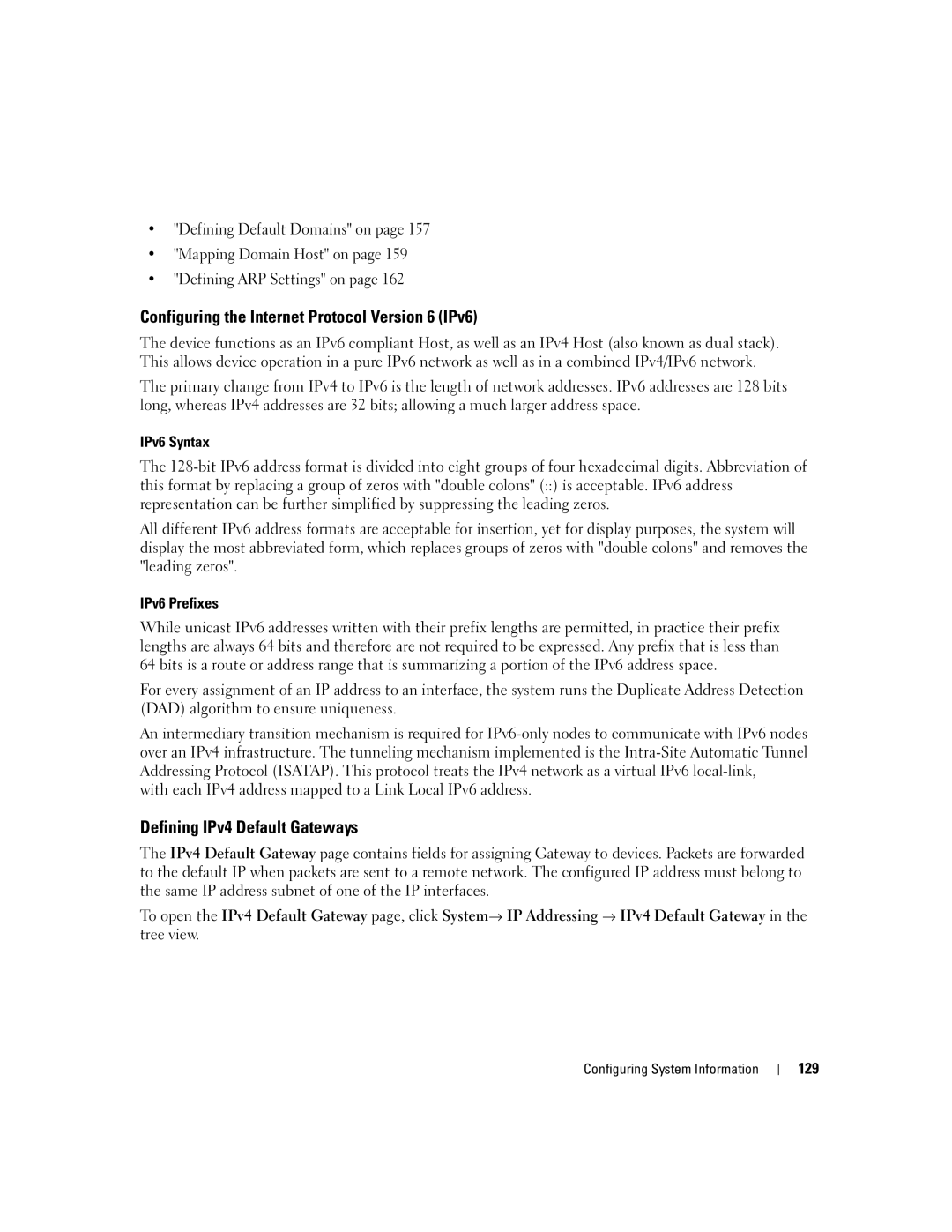•"Defining Default Domains" on page 157
•"Mapping Domain Host" on page 159
•"Defining ARP Settings" on page 162
Configuring the Internet Protocol Version 6 (IPv6)
The device functions as an IPv6 compliant Host, as well as an IPv4 Host (also known as dual stack). This allows device operation in a pure IPv6 network as well as in a combined IPv4/IPv6 network.
The primary change from IPv4 to IPv6 is the length of network addresses. IPv6 addresses are 128 bits long, whereas IPv4 addresses are 32 bits; allowing a much larger address space.
IPv6 Syntax
The
All different IPv6 address formats are acceptable for insertion, yet for display purposes, the system will display the most abbreviated form, which replaces groups of zeros with "double colons" and removes the "leading zeros".
IPv6 Prefixes
While unicast IPv6 addresses written with their prefix lengths are permitted, in practice their prefix lengths are always 64 bits and therefore are not required to be expressed. Any prefix that is less than 64 bits is a route or address range that is summarizing a portion of the IPv6 address space.
For every assignment of an IP address to an interface, the system runs the Duplicate Address Detection (DAD) algorithm to ensure uniqueness.
An intermediary transition mechanism is required for
with each IPv4 address mapped to a Link Local IPv6 address.
Defining IPv4 Default Gateways
The IPv4 Default Gateway page contains fields for assigning Gateway to devices. Packets are forwarded to the default IP when packets are sent to a remote network. The configured IP address must belong to the same IP address subnet of one of the IP interfaces.
To open the IPv4 Default Gateway page, click System→ IP Addressing → IPv4 Default Gateway in the tree view.
Configuring System Information
129
